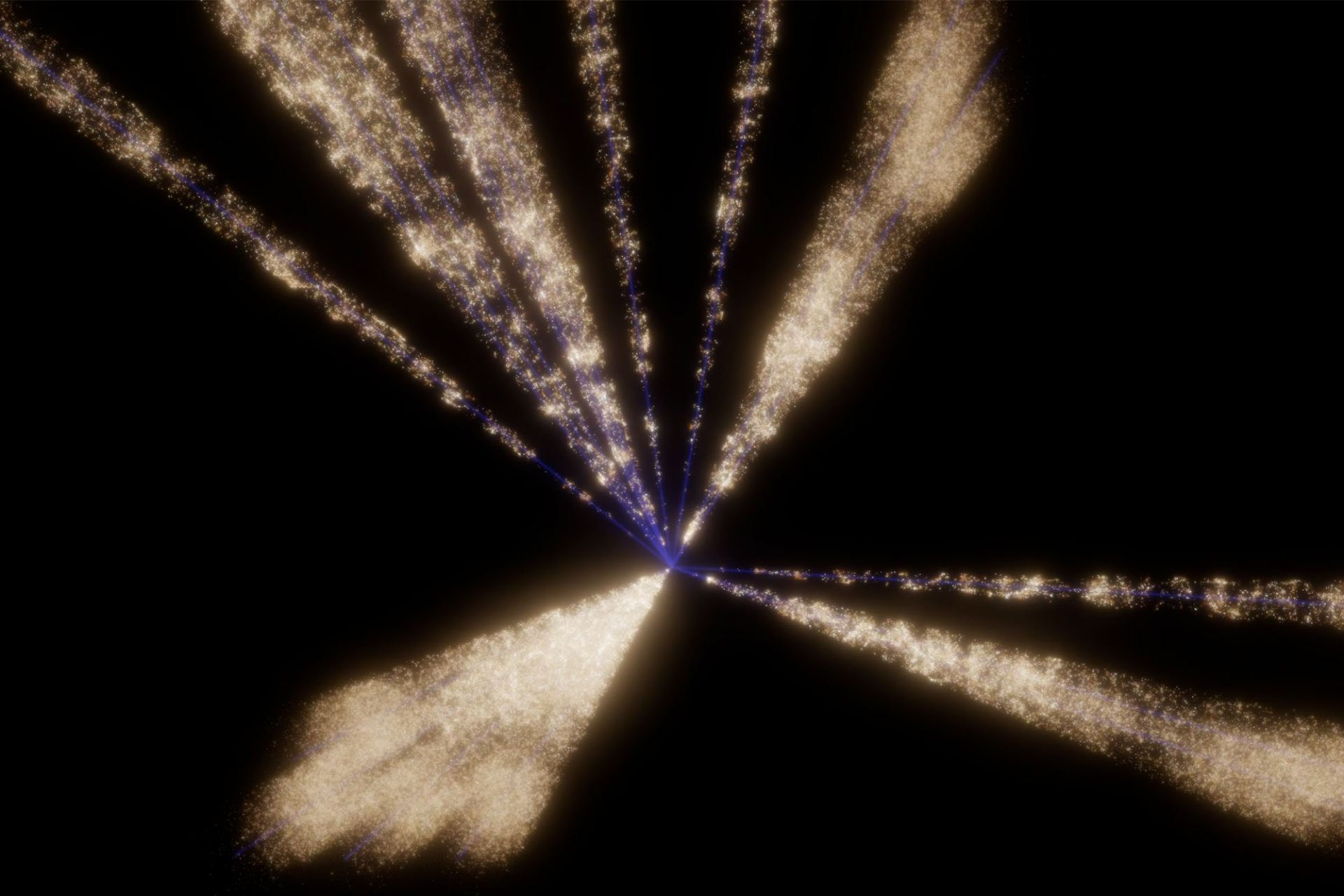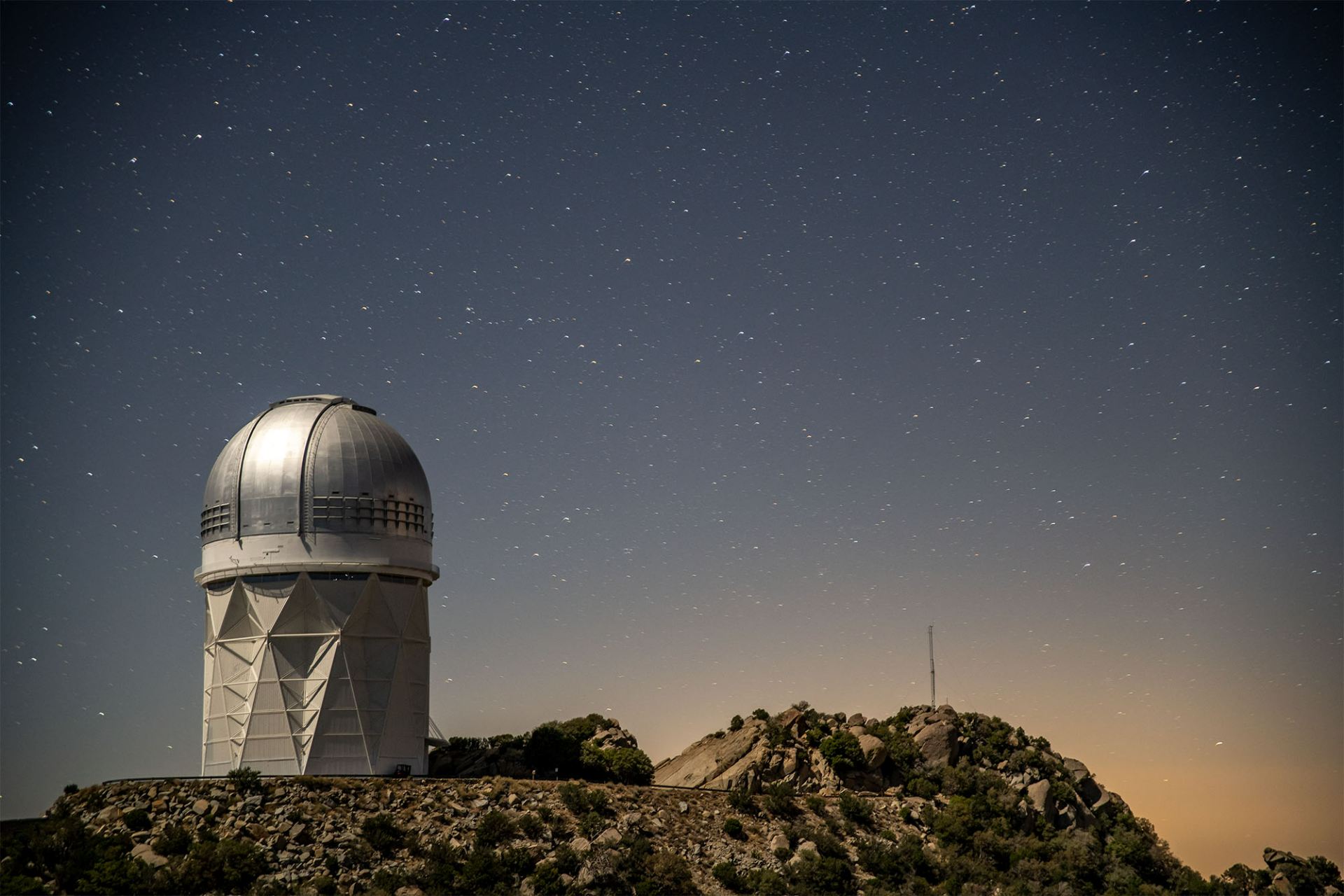16.06.2023

This fly-through image depicts part of the “One-Percent Survey” conducted by the Dark Energy Spectroscopic Instrument (DESI). Researchers took detailed images in 20 different directions on the sky, creating a 3D map of 700,000 objects and covering roughly 1% of the total volume DESI will study. The main DESI survey is filling in the gaps between those observations. Check out a short video of the fly-through on YouTube. (David Kirkby/DESI collaboration)
Dr. Mustapha Ishak-Boushaki, a theoretical astrophysicist at The University of Texas at Dallas, has spent his career seeking answers to some of the universe’s greatest mysteries, including why the expansion of the universe seems to be accelerating and whether gravity behaves differently beyond our closest cosmic neighbors.
To study these and other questions, a large collaboration of scientists, including Ishak-Boushaki and UTD physics doctoral students Cristhian Garcia Quintero, Leonel Medina Varela and Yunan Xie, are using data from the Dark Energy Spectroscopic Instrument (DESI) to map more than 40 million galaxies, quasars and stars. On June 13, the collaboration publicly released its first batch of data, with nearly 2 million objects for researchers to explore.
Spectroscopy is a technique that uses light from objects such as stars and galaxies to determine their physical properties, including chemical composition, distance and relative motion. DESI, a ground-based instrument at Kitt Peak National Observatory in Arizona, uses 5,000 robotic positioners to move optical fibers that capture light from objects millions or billions of light-years away. It is the most powerful multi-object survey spectrograph in the world, able to measure light from more than 100,000 galaxies in one night.
As the universe expands, it stretches light’s wavelength, making it redder — a characteristic known as redshift. The farther away the galaxy, the bigger the redshift. DESI specializes in collecting redshifts that can then be used to solve some of astrophysics’ biggest puzzles, such as what dark energy is and how it has shaped the structure and evolution of the universe.
The newly released 80-terabyte data set comes from 2,480 exposures taken over six months during the experiment’s “survey validation” phase in 2020 and 2021.
“With this data, we are creating a very precise, 3D map of objects in the universe, with a high degree of certainty where they are in space,” said Ishak-Boushaki, professor of physics in the School of Natural Sciences and Mathematics. “This is not possible with other observational methods, such as visual imaging.”
DESI is two years into its official five-year run and ahead of schedule on its quest to collect more than 40 million redshifts. The survey has already catalogued more than 26 million astronomical objects in its science run and is adding more than a million per month.
On June 13, the collaboration also published a set of papers related to the early data release that include early measurements of galaxy clustering, studies of rare objects, and descriptions of the instrument and survey operations. The new papers build upon DESI’s first measurement of the cosmological distance scale that was published in April, which used the first two months of routine survey data and also showed DESI’s ability to accomplish its design goals.
“The quality of this first two months of data is astonishing,” said Ishak-Boushaki, who is co-chair of the collaboration’s Cosmology Parameter Estimation working group, one of several specialized groups that are analyzing various aspects of the data. He, along with Garcia Quintero and Varela Medina, are co-authors of several of the new papers that describe the use of DESI data to detect the baryon acoustic oscillation signal. This signal shows how clusters of ordinary matter, called baryons, which formed shortly after the Big Bang, created an imprint where future galaxies and clusters of galaxies formed.
Much of Ishak-Boushaki’s research centers on confirming one of Albert Einstein’s most significant contributions to modern physics: the general theory of relativity. General relativity, which is a description of gravity, has two aspects that can be tested: how matter and light move in the universe.
“DESI will tell us how matter moves in the universe so we will be able to test general relativity to an unprecedented precision.”
Dr. Mustapha Ishak-Boushaki, professor of physics in the School of Natural Sciences and Mathematics
“Although general relativity has been confirmed in our solar system and nearby stars, at the level of cosmology — the largest scales in the universe — it has never been tested with high precision and has not been confirmed,” Ishak-Boushaki said. “It could be different at cosmological scales. DESI will tell us how matter moves in the universe so we will be able to test general relativity to an unprecedented precision.”
Insight from DESI into general relativity also could shed light on cosmic acceleration, the observation that the expansion of the universe is speeding up. Cosmic acceleration is problematic because it counters how gravity, which causes objects with mass to be drawn together, is observed to work in our solar system and nearby space.
Ishak-Boushaki, his students and many other astrophysicists are exploring possible explanations, including the effects of dark energy and dark matter, as well as the nature of gravity at large scales.
“Maybe at cosmological scales, general relativity changes into another theory, or there is a modification to it,” Ishak-Boushaki said. “DESI is the chief experiment that could give us an answer.”
The DESI collaboration includes more than 450 researchers from over 70 institutions worldwide. The Department of Energy’s (DOE) Lawrence Berkeley National Laboratory manages the experiment. In addition to the DOE, DESI is supported by the National Science Foundation, the Science and Technology Facilities Council of the United Kingdom, the Gordon and Betty Moore Foundation, the Heising-Simons Foundation, the French Alternative Energies and Atomic Energy Commission, the National Council of Science and Technology of Mexico, the Ministry of Science and Innovation of Spain, and DESI member institutions.


